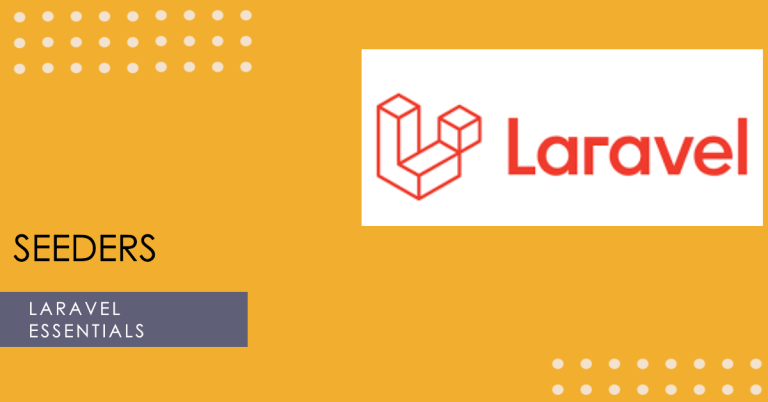In Laravel, a prominent PHP framework, one tool stands out for its utility in database management: the Laravel Seeder. This tool is not just a mere addition but a cornerstone in Laravel development, streamlining the process of populating databases with sample data. As we delve deeper into this topic, we’ll uncover the nuances of Laravel Seeders and their pivotal role in the Laravel framework.
Table of Contents
Understanding Laravel Seeders
Defining Laravel Seeders
Laravel Seeders are specialized classes that allow developers to populate their databases with predefined data. These seeders can be thought of as scripts, where each script represents a set of instructions to insert specific data into the database tables. This is particularly useful during the development phase, where having sample data can aid in testing and visualization.
Significance of Seeders in Laravel
The importance of Seeders in Laravel cannot be overstated. Here’s why:
- Consistency in Testing: With seeders, developers can ensure that they have a consistent set of data to work with during the testing phase. This means that regardless of the environment (be it local, staging, or production), the data remains consistent, leading to more reliable testing results.
- Efficiency in Development: Instead of manually entering data or using SQL scripts, developers can use seeders to automate the process. This not only saves time but also ensures that the data entered is error-free.
- Flexibility in Data Generation: Laravel Seeder allows for the integration with Laravel’s Eloquent ORM. This means developers can use Eloquent’s functionalities, like relationships, when writing their seeder scripts. For instance:
$users = App\User::factory(10)
->hasPosts(1)
->create();In the example above, not only are 10 users created, but each user also has a related post, showcasing the power and flexibility of combining seeders with Eloquent.
In conclusion, Laravel Seeders play a crucial role in the Laravel framework, providing developers with a powerful tool to manage and populate their databases efficiently and consistently. Whether you’re a seasoned Laravel developer or just starting out, understanding and utilizing seeders can significantly enhance your development workflow.
Setting Up Laravel Seeders
Seeder Creation with Artisan
One of the primary tools in the Laravel framework that aids in the creation of seeders is Artisan. This command-line interface provides a plethora of commands to streamline various tasks, including the creation of Laravel Seeder classes. To generate a new seeder, the following command can be used:
php artisan make:seeder SeederClassNameUpon execution, this command will produce a new seeder file within the database/seeders directory. This file serves as the blueprint where developers can define the type of data they wish to populate their database with.
Populating Models with Seed Data
Once the seeder class is in place, the next step involves writing the seed data for the models. Laravel Seeder classes utilize the Eloquent ORM, allowing developers to seamlessly integrate model factories or direct model creation within the seeder. This ensures that the data being seeded aligns with the structure and constraints of the database tables.
Seeder Implementation Examples
Example 1: Direct Model Creation
In situations where specific, predefined data is required, developers can directly create model instances within the seeder. Here’s a simple example of seeding a user:
public function run()
{
\App\Models\User::create([
'name' => 'John Doe',
'email' => 'john@example.com',
'password' => bcrypt('password123')
]);
}In this example, a new user with the specified attributes is created and saved to the database. This method is straightforward and ideal for scenarios where exact data points are known.
Example 2: Utilizing Model Factories
For more dynamic and randomized data, Laravel offers model factories. These factories can be combined with seeders to generate a variety of data points. Here’s how one can seed multiple users using a model factory:
public function run()
{
\App\Models\User::factory(10)->create();
}This example leverages a user factory to create 10 random user instances. The factory method, when combined with the create method, ensures that each of these instances is persisted to the database. This approach is particularly useful for generating large sets of sample data for testing and development purposes.
In essence, Laravel Seeders offer a robust and flexible mechanism to populate databases. Whether you’re looking to input specific data points or generate a randomized dataset, seeders, with the help of Artisan and Eloquent, make the process efficient and consistent.
Common Issues and Solutions
Troubleshooting Seeder Errors
While Laravel Seeder is a powerful tool, developers might occasionally encounter errors during its usage. One common error is the “Class not found” message. This typically arises when the seeder class hasn’t been autoloaded. Running the command composer dump-autoload can resolve this by regenerating the list of all classes that need to be included in the project.
Seeder Best Practices
To avoid common pitfalls with Laravel Seeder:
- Always ensure that the seeder classes are correctly named and located in the
database/seedersdirectory. - Regularly update and maintain model factories to ensure they align with the current database schema.
FAQs
What is the purpose of Laravel Seeders?
Laravel Seeders provide a mechanism to populate database tables with sample data.
How can I run a specific seeder class in Laravel?
You can specify the class name when using the db:seed command.
Can I use model factories within seeders?
Yes, model factories can be combined with seeders to generate dynamic data.
Conclusion
Laravel Seeders play a pivotal role in the Laravel framework, offering developers a streamlined approach to populate databases with consistent and reliable data. By understanding its functionalities and adhering to best practices, developers can harness the full potential of this tool, ensuring efficient and error-free database seeding.

